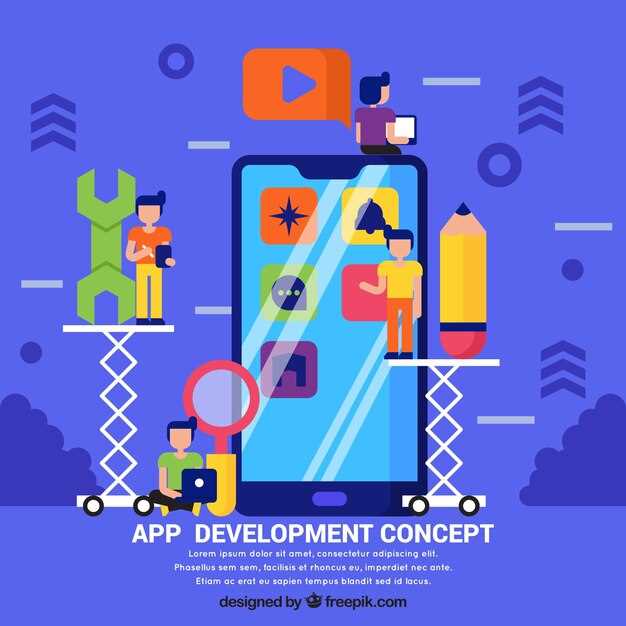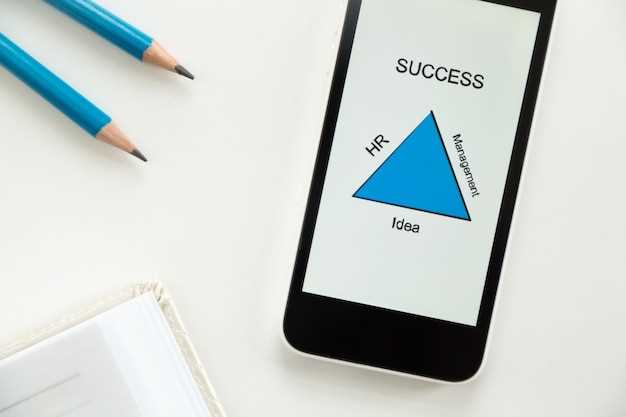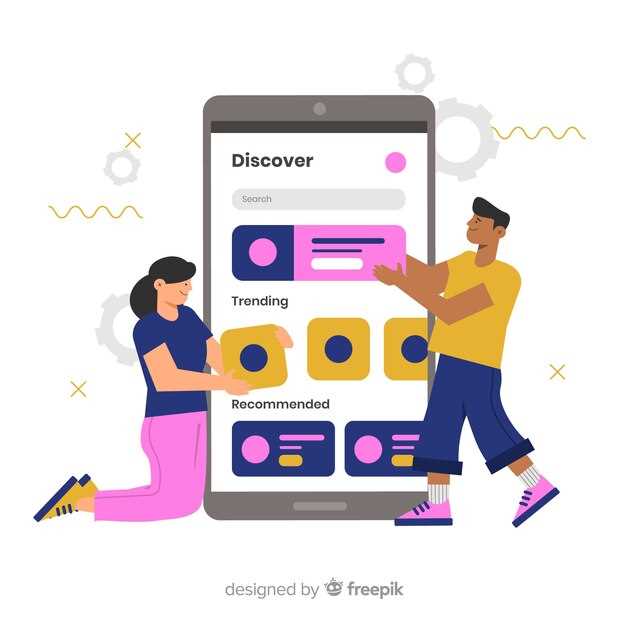In the ever-evolving realm of technology, mastering the creation of applications for advanced devices opens exciting doors. Individuals can elevate their abilities and tap into a dynamic market that thrives on innovation. The integration of smart technology into daily life has transformed user expectations and experiences. With countless opportunities arising, developing skills in this domain becomes essential for anyone looking to excel in today’s digital landscape.
Have you ever imagined how these intelligent gadgets enhance our daily routines? From fitness tracking to instant communication, their impact is profound. Yet, the journey to becoming proficient in crafting such solutions is often filled with challenges. Aspiring creators must navigate through numerous concepts and frameworks. Understanding these components can make all the difference between mediocrity and standout success.
As the demand for ingenious solutions skyrockets, honing your competencies becomes vital. The landscape is rich with potential for those ready to embark on this journey. Whether you are a seasoned programmer or a newcomer, every skill set is beneficial. Each project offers unique lessons and experiences, shaping your approach to problem-solving.
Let’s delve into the myriad aspects of creating compelling interfaces and functionality. We will explore essential tools, methodologies, and real-world applications that drive this fascinating field. This exploration invites you to discover strategies that not only refine your expertise but also inspire your creativity. By the end, you’ll possess valuable insights to thrive in a vibrant, fast-paced environment.
Ultimate Guide to Mobile App Development for Wearables
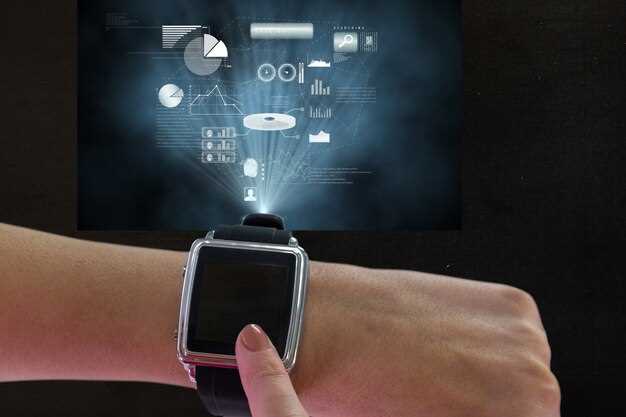
The realm of innovative gadgets has exploded, captivating the attention of users worldwide. These devices are no longer just accessories; they have evolved into essential tools that enhance our lives. As technology advances, the opportunities for creating applications tailored to these devices continue to grow. Developing software for these small yet powerful electronics requires a distinctive approach. This segment will delve into how to navigate this exciting field.
Understanding the unique characteristics of these devices is crucial.
- Screen size limitations
- Battery life considerations
- User interaction dynamics
Each factor significantly influences design choices and functionality. Precise communication is vital. Furthermore, proper optimization leads to increased user satisfaction and device performance. When designing interfaces, simplicity should reign supreme; users want seamless experiences that require minimal effort.
While developing software, consider the following:
- Research existing applications to identify gaps or opportunities.
- Gather user feedback to refine your concept.
- Prioritize intuitive navigation for unparalleled user experience.
- Incorporate health and fitness features to align with industry trends.
- Ensure cross-platform compatibility if applicable.
By keeping these strategies in mind, developers can significantly increase their chance of success within this dynamic sector. Moreover, continuous learning is essential, as technology evolves rapidly and offers new standards and challenges. Collaborating with fellow enthusiasts can spark creativity and expose practitioners to invaluable insights. Remember, persistence, curiosity, and adaptability are your strongest allies on this journey.
Understanding Wearable Technology Fundamentals

Wearable technology has revolutionized the way we interact with devices. It blends innovation with our daily lives seamlessly. These gadgets offer convenience, accessibility, and functionality. They serve diverse purposes, from tracking health metrics to enhancing communication. Such integration prompts us to rethink our relationship with technology.
At its core, wearable technology encompasses gadgets designed to be worn on the body. They utilize sensors to collect data and provide feedback in real-time, which enhances user experience. Whether it’s a smartwatch monitoring your heart rate or a fitness tracker counting steps, the applications are expansive. Furthermore, the convergence of design and functionality allows these devices to be both stylish and practical.
In recent years, the evolution has been profound. Manufacturers are continually pushing boundaries, introducing advanced features like GPS, connectivity options, and smart notifications. This relentless innovation has resulted in smarter devices that not only monitor but also analyze our behaviors. For instance, some wearables can predict health issues before they become serious. As these technologies progress, their impact on everyday life becomes increasingly significant.
Understanding the basics of wearable tech opens doors to numerous possibilities. As users, we benefit from tailored experiences that cater to individual needs. With the right tools and knowledge, anyone can leverage these technologies effectively. It’s an ever-evolving field, ripe with opportunities for exploration and growth.
Defining Wearable Devices and Their Uses
In today’s fast-paced world, technology has transcended traditional boundaries. We now interact with devices that are seamlessly integrated into our daily lives. This fusion of functionality and convenience opens up a variety of possibilities. One of the most exciting areas of innovation lies in compact technology that can be worn. Devices that one can wear are not merely accessories; they represent a transformation in how we monitor health, communicate, and engage with our surroundings.
Wearable gadgets encompass a broad range of products. Common examples include smartwatches, fitness trackers, and health monitors. Their designs often prioritize portability and ease of use. Additionally, these devices collect data to provide insights on physical activity or vital signs.
They can also enhance communication. For instance, smart glasses and augmented reality headsets offer novel user experiences. These tools can simplify life dramatically, reducing the reliance on smartphones and other devices. This blend of practicality and connectivity contributes to a more interactive and informed lifestyle.
Specifically, many wearables focus on fitness-related metrics, providing users with valuable information. They track steps, heart rate, sleep patterns, and even stress levels. With this knowledge, individuals are empowered to make informed lifestyle choices. In contrast, other devices cater to entertainment or productivity, allowing users to receive notifications or manage tasks with ease.
Wearable technology has sparked interest across various sectors, including healthcare, gaming, and personal safety. This diversity in application underscores their importance in modern society. Furthermore, as these devices evolve, their potential to positively impact daily routines continues to expand. Wearables are more than just gadgets; they’re tools that can significantly enhance our quality of life.
Key Features of Wearable Technology
Wearable technology has become an integral part of our lives, seamlessly blending with our routines. These devices offer unique functionalities that go far beyond traditional gadgets. Accessibility, health monitoring, and smart notifications are just a few remarkable attributes. Moreover, they provide an intertwined experience with our broader digital ecosystem.
Fitness tracking is crucial. Many wearable devices can monitor heart rate, sleep patterns, and physical activity. They serve as personal trainers, encouraging movement and helping users set fitness goals. With these capabilities, individuals can take charge of their health like never before. This aspect has drastically transformed the fitness industry and personal healthcare.
Real-time connectivity is another significant characteristic. Wearable gadgets often sync with smartphones, allowing users to receive notifications instantly. Text messages, calls, and even social media alerts can appear right on their wrists. This facilitates staying connected without the need to constantly check a phone.
Another feature worth mentioning is customization. Users can personalize their devices with various interfaces, apps, and functionalities. This adaptability lets them tailor their experiences according to their preferences and needs. As a result, wearables become uniquely suited to individual lifestyles, making technology more engaging and relevant.
Lastly, integration with other technologies is essential. Wearable devices can interact with home automation systems, smart appliances, and various third-party applications. This interaction fosters an environment where technology works harmoniously, enhancing everyday experiences. Ultimately, the potential of wearable technology continues to expand, showcasing the remarkable evolution in how we interact with the digital world.
The Importance of User Experience in Wearables
In an era where technology intertwines seamlessly with daily life, the experience of using gadgets becomes paramount. Devices worn on the body should make life easier and more enjoyable. User satisfaction directly affects the overall success of these gadgets. When people interact with technology, their emotions play a crucial role.
A well-designed interface can lead to more efficient use. Conversely, a confusing setup leads to frustration. Integration with other devices is essential. Reliability and convenience are paramount for users. If something feels clunky, individuals may abandon it without a second thought.
To grasp the significance of user experience, one must consider the varied contexts in which these gadgets are used. For instance, someone running in a park will have different needs than another at a busy workstation. Personalization can elevate usability, allowing users to adjust features catering specifically to their routines and preferences. This level of flexibility can transform the interaction from a mere task to an enjoyable experience, fostering loyalty and consistent usage.
- Simplicity is key. Users should navigate effortlessly.
- Feedback mechanisms enable users to voices their issues.
- Intuitive design streamlines engagement.
- Constant updates can enhance functionality, meeting evolving user requirements.
Ultimately, investing in user experience is not just important but vital. As the market expands, standing out from the competition hinges on how well devices resonate with users. Focusing on emotional connections and practical usability fosters a relationship that encourages ongoing interaction and trust. In a world where choices abound, those that prioritize user experience will flourish while others fade into obscurity.
Developing Apps for Smartwatches
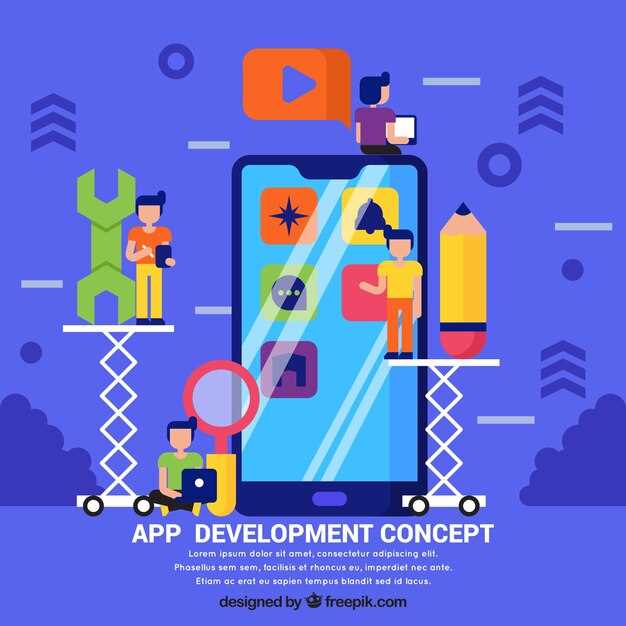
Creating software for wrist devices requires a unique approach. These gadgets offer distinct functionalities and user experiences. Unlike traditional interfaces, their small screens present both challenges and opportunities. Understanding user interactions is key to success. Adaptation is essential for meaningful engagement.
Users expect efficiency and simplicity. Every touch counts. A swift response is crucial for satisfaction. Each feature should hold significance, and unnecessary elements must be minimized. Repetitive actions tend to frustrate, leading to abandonment.
| Aspect | Description |
|---|---|
| User Interface | Design should be intuitive and accessible, focusing on usability. |
| Performance | Speed and responsiveness are vital to enhance user experience. |
| Battery Efficiency | Optimizing energy consumption ensures prolonged device usability. |
| Notifications | Effective messaging can provide essential updates without overwhelming users. |
| Integration | Seamless connectivity with other devices enhances overall functionality. |
Taking advantage of these elements will lead to more engaging and effective creations. The ultimate goal is to craft experiences that resonate with users, making technology an essential part of daily life. By focusing on both design and performance, developers can create solutions that stand out in a crowded market.
Choosing Between Wear OS and watchOS
When deciding which platform to embrace, various factors come into play. Each environment possesses unique characteristics and advantages. Understanding these can greatly impact your project’s success. Compatibility, user experience, and development tools are crucial considerations.
Wear OS offers flexibility and works seamlessly with Android devices, providing a broad user base. In contrast, watchOS is designed exclusively for Apple’s ecosystem, fostering a more integrated user experience. This choice shapes the type of audience you reach. Think about the hardware, the type of smartphone your users might have, and other elements that influence interaction.
Moreover, the development environments differ significantly. Wear OS utilizes Android’s programming languages, allowing for a wider variety of developers. watchOS, on the other hand, is more focused, offering specific tools tailored for Apple’s guidelines. This may streamline your workflow or limit design possibilities, depending on what you’re aiming for.
Ultimately, the decision hinges on your target demographic and personal preferences. Take time to weigh the pros and cons carefully. Both platforms have their merits and challenges. Consider the impacts they might have not just on the application, but also on the overall user satisfaction.
Essential Tools for Smartwatch App Development
Creating innovative solutions for wrist devices requires a set of key resources. These instruments can help streamline the process of bringing ideas to fruition. They are not merely aids; they serve as the foundation for crafting engaging experiences. Selecting the right options can significantly influence your project’s success.
Start with integrated development environments (IDEs), as they simplify coding. A strong IDE provides essential features like debugging and task management. Additionally, simulators and emulators allow testing on different screen sizes and resolutions. They are crucial for ensuring your design works seamlessly on various smartwatches.
Furthermore, leveraging software development kits (SDKs) tailored for specific platforms can enhance functionality. These kits often provide valuable libraries, which speed up the integration of features. Some popular choices include those from Android Wear and WatchOS. Choosing the appropriate SDK can drastically reduce your workload while boosting performance.
Another vital component is design tools that focus on the unique constraints of wearable tech. Given the limited screen space, user interface design becomes an art form. Tools that offer prototyping capabilities are crucial in visualizing interactions. They allow for rapid iterations and valuable user feedback early in the process, leading to a more polished final product.
Moreover, collaboration platforms play an essential role in teamwork. They facilitate communication between developers, designers, and project managers. Keeping everyone on the same page is critical when different skills and perspectives are involved in the process. Choosing the right collaboration tool can significantly improve efficiency and lead to a more cohesive product.
Lastly, analytics tools should not be overlooked. Understanding user behavior can inform decisions about updates and features. These insights help in refining your offering and ensuring user satisfaction. In an era where user preferences evolve rapidly, real-time data becomes your best ally.
Design Considerations for Small Screens
The challenge of creating interfaces for compact displays requires a fresh perspective. Small screens limit available space drastically. Thus, every element must serve a clear purpose. Simplicity is not just an option; it’s a necessity. An effective design is one that communicates efficiently despite physical constraints.
When designing for limited dimensions, prioritize content hierarchy. Key features should stand out immediately. Use ample whitespace to provide breathing room for essential elements. Avoid clutter at all costs. A clean interface enhances usability significantly.
Moreover, consider the touch interactions. Given that users navigate through taps and swipes, larger buttons and appropriately spaced elements are crucial. This not only improves the user experience but also minimizes errors. Delicate controls can lead to frustration, especially in an environment where users expect seamless functionality.
Additionally, readability is paramount. Choose legible fonts and maintain adequate contrast. Small text can be hard to decipher quickly, compromising the overall experience. Instead of cramming information, use concise wording and visuals to convey messages effectively.
Emphasizing adaptability is vital too. Responsive designs that adjust to different orientations and resolutions ensure accessibility across various devices. This flexibility contributes to a more inclusive experience, catering to diverse user needs.
In essence, thoughtful design for diminutive screens not only improves user satisfaction but also fosters engagement. By prioritizing simplicity, interactiveness, and adaptability, the final product becomes more intuitive and enjoyable to use. When all these elements converge harmoniously, users are likely to have a far richer interaction with the technology at hand.
Integrating Health and Fitness Features
Incorporating wellness and physical activity functionalities into technology offers immense benefits. These features can transform the user experience and encourage healthier habits. From heart rate monitoring to activity tracking, the options are vast. They can be a game-changer for user engagement and satisfaction.
Individuals today are more health-conscious than ever. They seek tools that assist in maintaining their well-being. By providing real-time insights and feedback, you can help users make informed decisions. This not only enhances their daily routines but also promotes a lifestyle geared towards fitness and overall health.
In order to create impactful experiences, consider integrating features like sleep tracking and calorie counting. Notifications for hydration or reminders for exercise sessions can significantly enhance user interaction. Gamification elements can motivate users to reach goals and create a sense of community. By harnessing the data provided from sensors and health metrics, you can build a truly personalized experience that resonates with each user.
As you explore the integration of these health-centric features, think about how to present data intuitively. Users appreciate visual representations of their progress, be it through graphs or charts. When combined effectively, these elements can lead to a more engaging and motivating environment. Ultimately, the key lies in creating a seamless blend of functionality and user-friendly design.
Video:
The Complete App Development Roadmap [2024]
The Complete App Development Roadmap [2024] by Programming with Mosh 390,658 views 5 months ago 7 minutes, 52 seconds
Q&A:
What are the key differences between developing apps for wearables and traditional mobile apps?
Developing apps for wearables involves unique considerations compared to traditional mobile apps. Wearable devices often have smaller screens and limited processing power, which necessitates a design that emphasizes simplicity and efficiency. Developers must focus on delivering quick, glanceable information, and interactions should be minimized to accommodate the limited user input capabilities of these devices. Additionally, wearables frequently leverage sensors to provide context-aware experiences, which requires a deeper understanding of sensor integration and data usage. Overall, development for wearables often prioritizes a user experience that is both intuitive and contextually relevant.
What programming languages and tools are commonly used for wearable app development?
Several programming languages and tools are widely used in wearable app development. For Android wearables, Kotlin and Java are the primary languages, often employed through Android Studio with SDKs tailored for wearables. On the iOS side, Swift is the main programming language used for developing apps compatible with Apple Watch, and Xcode serves as the development environment. Additionally, frameworks like Flutter can provide a cross-platform approach, allowing developers to create applications for both Android and iOS wearables. Increasingly, cloud services and APIs are also leveraged to enhance app functionality and facilitate data exchange between devices.
What are some best practices for designing user interfaces for wearable apps?
Designing user interfaces for wearable apps requires adhering to several best practices to ensure an optimal user experience. Firstly, prioritize clarity and simplicity; the limited screen size means that cluttered interfaces can overwhelm users. Use large, legible fonts and plenty of white space to enhance readability. Secondly, incorporate intuitive gestures and navigation patterns, such as swiping or tapping, that are easy to perform on small screens. Thirdly, ensure your app leverages notifications wisely, providing timely and relevant alerts without overwhelming the user. Lastly, optimize for quick interactions, enabling users to accomplish tasks swiftly since wearables thrive on the principle of ‘glanceability.’ By following these practices, designers can create effective and user-friendly wearable applications.
How do I test and optimize my wearable app before launch?
Testing and optimizing a wearable app is crucial to ensure it functions well across different scenarios and devices. Start by conducting usability testing with real users, focusing on how they interact with the app in real-world situations. This feedback will guide you in making necessary adjustments to the user interface and functionality. Use emulators for initial testing, but always validate results on actual wearable devices, as performance can vary. Additionally, monitor battery usage and optimize code to reduce power consumption, as wearables have limited battery life. Conduct performance testing to check for responsiveness and load times. Finally, consider gathering data analytics post-launch to continue improving the app based on actual user behavior and preferences.
